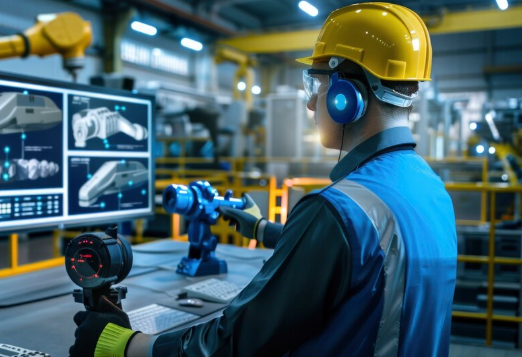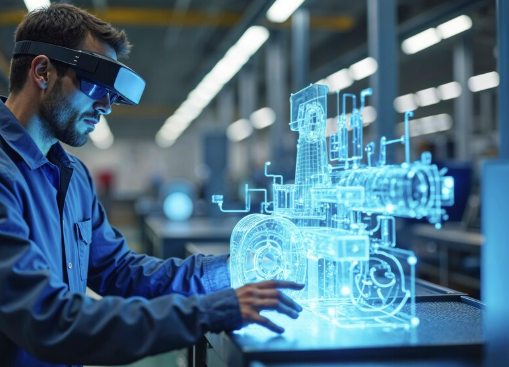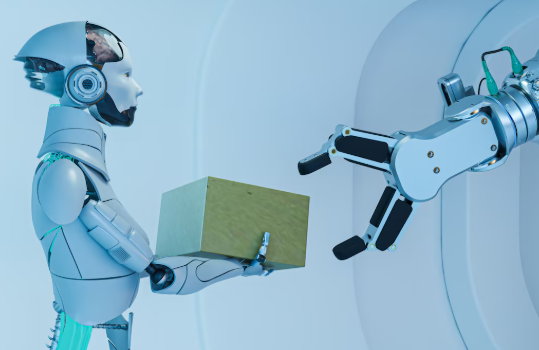In a rapidly transforming technological landscape, STL Digital is at the forefront of developing scalable, intelligent, and future-ready solutions. As businesses move beyond automation to cognitive capabilities, the need to build adaptive, AGI-ready products is emerging as a decisive shift in engineering. Artificial General Intelligence (AGI) no longer exists solely in theoretical discourse. It is gradually informing the next generation of product design—where adaptability, autonomy, and learning are no longer features, but foundational requirements.
The convergence of machine learning, cloud computing, real-time data processing, and advanced interface design is leading to a new class of products. These are systems that don’t just solve specific problems but learn from diverse experiences, much like humans. And while today’s Artificial Intelligence (AI) has revolutionized industries with narrow use cases, tomorrow’s engineering challenges involve preparing products for a general intelligence landscape—a terrain that demands rethinking both software architecture and hardware flexibility.
From Smart to Adaptive: The Evolution of Engineering Mindsets
For decades, engineering focused on building robust, rule-based systems. The goal was functionality, not evolution. As deep learning and neural networks advanced, smart products—capable of performing repetitive, data-rich tasks—came into the spotlight. However, these solutions remain narrow in scope.
Designing AGI-ready products requires a profound departure from rigid rule sets. Instead, these systems must understand context, extrapolate from incomplete data, and generalize learning across domains. This adaptive layer becomes the cornerstone of an AGI-ready architecture. It’s not enough for an AI-powered system to recognize patterns; it must interpret intent, adjust its strategy dynamically, and improve autonomously over time.
Engineering for Generalization, Not Just Specialization
Traditional AI models are like expert chess players—brilliant at one game, helpless elsewhere. AGI-ready systems are expected to be more like polymaths: competent in many tasks, able to transfer learning from one field to another.
This calls for re-engineering in several domains:
- Data Infrastructure: Engineering teams must build systems that continuously collect, label, and validate data streams in diverse formats—text, image, sound, and sensor feedback—allowing the system to learn more holistically.
- Model Architecture: Rather than hyper-specialized models, AGI-ready systems will use architectures that support transfer learning and multimodal reasoning.
- Hardware Abstraction: With AGI, software needs to interact with hardware in flexible ways, adapting to new environments. Think modular robotics, edge AI, and quantum-ready processing units.
User Experience in the Age of Intelligent Systems
User interfaces in AGI-ready products will also evolve. Today, interfaces are designed around known user behaviors. In an AGI context, interfaces must become conversational, emotionally responsive, and predictive.
An illustrative example can be seen in how customer experience is being revolutionized. According to Frost & Sullivan, AI-powered platforms are transforming contact centers by integrating sentiment analysis and real-time responsiveness, which are early markers of adaptive interfaces.
For AGI-ready systems, interfaces must be context-aware, capable of adjusting to the user’s mood, goals, and even preferred communication style—blending empathy with intelligence.
Designing for Autonomy and Continuous Learning
The hallmark of AGI-readiness lies in autonomy. A truly adaptive system should:
- Learn Independently: Engineers must enable real-time model training through reinforcement learning, not just batch-fed data.
- Decide Autonomously: AGI-ready systems should make decisions in ambiguous scenarios without constant human intervention.
- Improve Over Time: The system must revise its models and actions as it receives feedback from the environment.
This paradigm aligns with what Forrester emphasizes in its report on Agentic AI and process orchestration: systems are becoming more agentic, with the ability to self-direct and orchestrate complex processes across organizational functions.
AI Innovation Meets Product Engineering
Pioneering product teams are already embedding AGI-compatible layers into existing infrastructures. Here are a few emerging design principles being adopted:
- Interoperability: Products should be able to communicate across platforms and protocols—whether it’s IoT ecosystems, enterprise software, or decentralized networks.
- Resilience by Design: Adaptive systems must handle failure gracefully. Think self-healing software and fault-tolerant architectures that can diagnose and correct their own errors.
- Intent Modeling: Future systems will shift from command-based logic to intent-based actions. For example, instead of asking a system to “turn down the lights,” the system might anticipate a user’s intent to relax and adjust lighting, temperature, and soundscapes accordingly.
- Ethical and Explainable AI: As these products make autonomous decisions, it’s critical to ensure explainability and fairness. Black-box systems are being replaced with transparent, ethical models that can justify their behavior.
Workforce Transformation: Engineering Beyond Code
This shift to AGI-readiness is also redefining the roles of engineers themselves. A recent Gartner report states that by 2027, 80% of engineering teams will need to upskill to meet the demands of generative and intelligent systems.
It’s not just about technical skills; it’s about new ways of thinking—interdisciplinary design, human-centered engineering, and systems thinking. Engineers must now be part data scientist, part ethicist, and part experience designer.
Use Case: Adaptive Robotics in Manufacturing
Consider the role of AGI-ready systems in robotics. In smart manufacturing, robots traditionally followed predefined tasks. But adaptive robots—trained via AGI principles—can now:
- Detect and adapt to material changes
- Switch tasks without reprogramming
- Collaborate with human workers in unpredictable scenarios
This fusion of machine adaptability and human intuition is redefining shop floor dynamics, boosting both safety and productivity.
Use Case: Personalized Education Platforms
In education, adaptive systems are reimagining how students learn. AGI-ready platforms can:
- Tailor curriculum based on emotional and cognitive states
- Identify knowledge gaps without being explicitly programmed
- Guide students in Socratic-style dialogues, not just information delivery
These platforms blend content with cognitive science, turning passive learning into a guided, evolving journey.
Business Implications: Designing for Market Agility
Beyond technical sophistication, AGI-ready products will transform how businesses operate. Product life cycles will shorten, but value delivery will intensify. Companies will compete on intelligence agility—how quickly a product adapts to new use cases, environments, and user needs.
This adaptability also feeds directly into AI applications in business, where personalization, automation, and prediction become integrated into every customer touchpoint. From marketing to logistics to HR, AGI-ready products will shift strategy from reactive problem-solving to proactive value creation.
The Road Ahead
As we stand at the edge of this transformative wave, engineers, designers, businesses, and policymakers must work in unison to realize the potential of AGI-ready systems. These products will not just adapt—they will co-evolve with humanity, anticipating needs, solving problems before they arise, and becoming integral companions in work and life.
At STL Digital, our commitment to pioneering this future means investing in the technologies, people, and principles that make intelligent, adaptive systems possible. From redefining product architectures to embracing AI innovation with integrity and foresight, we are helping shape the next generation of engineering excellence.



